It doesn't seem too long ago that we were questioning whether OLED TV would really take off, but our test rooms have seen plenty of stunning OLED TVs pass through from various manufacturers. Our verdict? OLED TVs were definitely worth the wait.
Televisions have evolved rapidly over the past few years - we've seen smart functionality, 4K Ultra HD resolution and HDR all become established features. OLED technology has also managed to work its way on to the long list of TV jargon, with its main selling point being ultra-dark blacks (surpassing those previously seen on plasma TVs) and super-punchy contrast.
The first OLED TVs from LG and Samsung hit the shelves in 2013, giving us a tempting glimpse of the fabled picture quality and slimline design the technology promised.
But it hasn't been a smooth ride for OLED since then. First, there was news that Sony and Panasonic had ended an OLED TV production partnership in order to focus on Ultra HD LCD TV production, and in 2015, Samsung decided to ditch OLED and concentrate on 4K LCD screens, leaving LG as the sole manufacturer of OLED screens.
Fast forward to 2017, and we now have seven TV manufacturers with OLED sets in their TV line-up: LG, Panasonic, Sony, Philips, Toshiba, Bang & Olufsen and Loewe. They still source all the panels from LG Display, who remain the only company actually producing OLED TV panels.
Samsung, meanwhile, is backing a different horse when it comes to TV tech: QLED. Don't confuse QLED with OLED, though - they're two completely different TV technologies. Samsung does produce OLED screens, quite a lot of them in fact, but only for mobile devices - like the new iPhone.
But what's all the fuss about OLED anyway? How does OLED technology work, what's so good about it and which are the best OLED TVs to buy? Let us explain.
WHAT IS OLED?
OLED – Organic Light-Emitting Diode – is a type of display technology that makes it possible to reach dark blacks and build ultra-thin televisions, while at the same time making them more efficient and eco-friendly.
Here’s how OLED technology works: an organic, carbon-based film is placed between two conductors, and when an electrical current is passed through, it emits light.
This process takes place in every single pixel in an OLED display.
This differs from an LCD (Liquid Crystal Display) panel, which requires a backlight (typically made of standard LEDs) to light up the liquid crystals and create an image. Not only does this require a lot of energy, you also don't get true blacks as the backlight affects neighbouring pixels.
On an OLED panel, the organic pixels are self-emissive, which means they generate their own light - and can go pitch black when each pixel is turned off.
There are two types of OLED technology: Passive-Matrix (PMOLED) and Active-Matrix (AMOLED). Active-Matrix requires electronics to switch each pixel on or off individually, which is better for displaying deep blacks, and therefore the type used for the OLED TVs we see today.
OLED pixels also include an additional white pixel alongside the usual red, green and blue sub-pixels, which aims to deliver more varied and accurate colours, as well as increasing a display's lifespan.
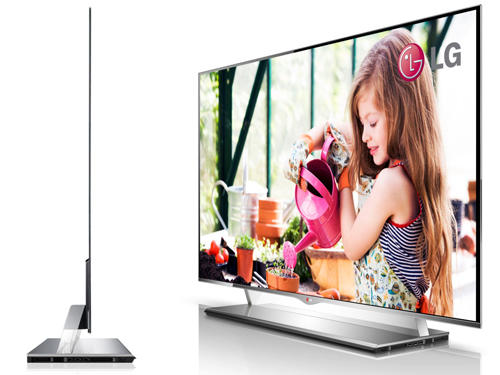
WHAT ARE THE ADVANTAGES OF OLED TV?
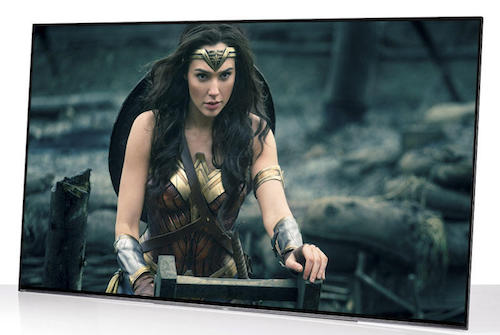
OLED technology has several advantages over LED-lit LCD TVs.
First, there's design – OLED sets are lighter and thinner than LCDs since they don't need a separate backlight.
To give you an example of just how slim, LG showed off an OLED display just 0.97mm thin back in 2015, while you can buy the more recent "Wallpaper" TV (the £8000 OLED65W7), which measures just 2.57mm. It's really very flexible.
But of greater interest is the picture quality. Because each pixel can be turned off individually, OLED TVs deliver absolute black and stronger contrast ratio – the holy grail for AV purists. We've seen this striking contrast and depth time and time again on OLED TVs such as the five-star LG OLED55B7V.
Since OLED pixels emit their own light and colour, viewing angles also tend to be much wider than LED-backlit LCDs: colour and contrast retain their intensity from as far as 90 degrees off centre.
And while Samsung's 2017 QLED sets are significantly brighter (the QE49Q7C reaches 1500nits), OLED panels are catching up. You can get 1000nits of peak brightness from a 2017 LG OLED (such as on the OLED65E7V), where previously it topped off at 800nits.
WHAT ARE THE DISADVANTAGES OF OLED TV?
OLED is extremely expensive to produce, and consequently, OLED TVs are expensive to buy.
In its infancy, OLED production had a punishingly low yield rate, which meant that for every set fit for sale, a high number were consigned to the scrapheap. This made the technology expensive to produce - and this is one of the main reasons why you still don't see OLED TVs under 55in.
LG’s first 55in OLED set, the 55EM970V, cost £10,000 when it launched in 2013, and the company's 55EA980W sold for £8,000. Samsung’s first OLED set, the KE55S9C, sold for £7,000.
Prices have thankfully come down in the last couple of years, due to an increase in LG Display's yield for 4K OLED panels: LG's OLED55B7V and OLED55C7V are now available under £2500.
They're still pricey, though. 2016's flagship LG OLED65G6V cost £6000, while this year's Sony KD-55A1 will set you back £3500.
And of course, B&O's BeoVision Eclipse and Loewe's Bild 7 OLED TVs are targeted at the very wealthy.
Another one of OLED’s problems concerns the pesky blue pixel. The organic material used to create blue light deteriorates more quickly than red and green, which means its lifespan is shorter and, over time, the colour balance could be affected, although we've never experienced any issues during our tests.
Thankfully, based on recent OLED TVs, the sets are definitely getting better - and more affordable.
WHAT ABOUT 4K HDR OLED TVS?
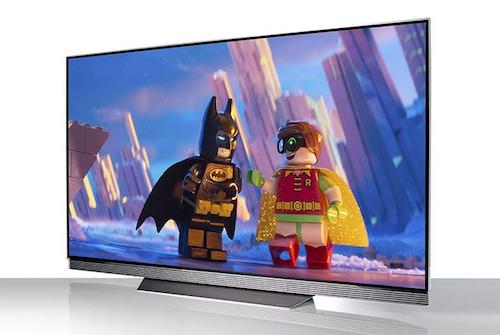
The first few mass-production OLED models were Full HD screens - such as 2014's 55EC930V and before that, LG's 15in model from 2010: the 15EL9500.
But with the advent of 4K Ultra HD resolution, it was only a matter of time before the two cutting-edge technologies were combined. LG introduced the first 4K OLED TV - the 55EG960V - in 2015, and since then it's become an incredibly impressive combination.
HDR (High Dynamic Range) isn't exclusive to OLED TVs, but it can make a huge impact on OLED's picture performance by displaying even greater variations in colour and brightness.
HDR also comes in different flavours, from the standard HDR10 format to Dolby Vision HDR to the broadcast variant HLG (Hybrid Log Gamma) - each with its own benefits.
4K OLED TVs with HDR include the stellar Sony KD-55A1, the Panasonic TX-55EZ952B (whose HDR performance was the weakest link), while all of LG's 2017 OLED TVs come with Dolby Vision HDR support as standard.
There are even more 4K HDR OLEDs in the pipeline: we've seen Panasonic's flagship TX-65EZ1002 at CES 2017, Toshiba's first OLED, the 65X9863DB and the new Philips 65POS9603 at IFA 2017, as well as the BeoVision Eclipse - B&O and LG's joint offering that comes with a motorised stand and soundbar-like speaker.
WHAT ABOUT CURVED OLED TVS?
Samsung and LG were the first to launch curved OLED screens. There's been a lot of scepticism over the curve - is it genuinely useful or is it just another gimmick?
We saw it as both a plus and a minus in our review of Samsung's first curved OLED TV. “It’s an outlandish idea,”
The argument in favour is that some people feel a curved set can enhance the viewing experience. Samsung has claimed in the past that it provides “depth to the content displayed for a more life-like viewing experience”, and delivers an “immersive panorama effect". LG has said the curve is there to “remove the problem of screen-edge visual distortion and detail loss”.
However, manufacturers' enthusiasm for curved OLED TVs has cooled somewhat in the last year, with flat OLED screens now dominating the market. At the start of 2017, LG and Sony announced they would stop making curved TVs, OLED or otherwise. Samsung is the only one still making curved screens for some of its 2017 LCD TVs.
In our opinion, a curved screen makes more sense on a phone - like on the LG G Flex, G Flex 2 or Samsung Galaxy S8+ - than on a TV.
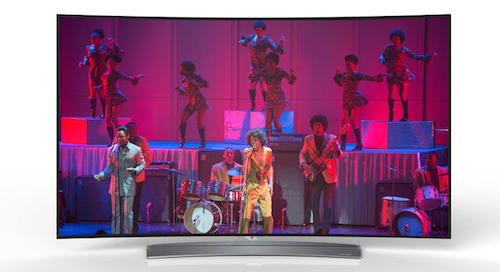
WHAT ARE THE ALTERNATIVES TO OLED TVS?
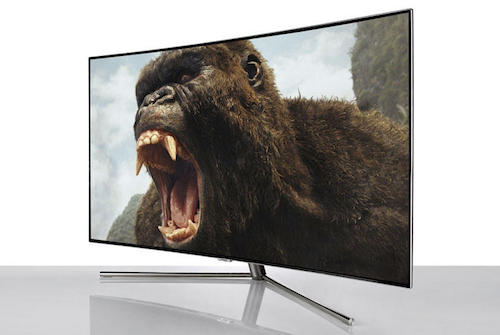
Quantum dot technology is the biggest rival to OLED screens, most notably Samsung's most recent variant, QLED.
QLED (Quantum-dot Light-Emitting Diode) uses tiny semiconductor particles only a few nanometers in size, which, in theory, emit their own light. It's based on existing quantum dot technology, where the bigger particles emit red light and the smaller ones do blue light, for instance.
In current TVs, however, they don't emit their own
However, Samsung - who is the main proponent of this technology - claims its 2017 QLED screens will deliver all the benefits of OLED (deep blacks) but with much brighter whites (beyond 1500nits of peak brightness) and a 100% reproduction of the colour volume.
The QLEDs we've tested so far - the five-star QE55Q7F and the four-star QE49Q7C - deliver brilliant whites and superbly detailed colours, but they still can't quite reach the same black depths as an OLED. The QLED sets are almost as expensive as the equivalent OLEDs, too, despite quantum dot TVs being easier and cheaper to manufacture than OLED.
Philips is also using quantum dot technology for the first time in its 8000 4K LCD range, which was revealed at IFA 2017.
LG also previously promised a 4K quantum dot TV, but it's now planning its own version using Nano Cell technology. Unlike
Chinese manufacturer Hisense has introduced its own take on the tech - ULED (Ultra LED) - which it claims can produce a picture quality as good as OLED but for much cheaper. We're not convinced, however, as the Hisense 65XT910 failed to impress us despite the £2200 price tag. And it seems Hisense agrees, as it's also planning to jump on the QLED bandwagon with Samsung.
